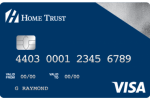

Get exclusive members-only pricing on Canada - U.S. roaming plans.

Snowbirds, save on foreign exchange rates.

Have your vehicle shipped between Canada and the U.S.

Free prescription medication delivery + virtual doctor visits.

Gets exclusive discounts, services and resources for snowbirds.

Get the inside scoop on select snowbird destinations.

Members save 15% at Choice Hotels.

Get great prices on car rentals in over 180 countries.

No foreign transaction fee credit card for snowbirds.

Save on home insurance that meets the needs of snowbirds.

Save on auto insurance that meets the needs of snowbirds.

Save on home monitoring and security plans for snowbirds.

Exclusive 5% discount for Snowbird Advisor members!

Many current and future Canadian snowbirds are tempted by the relatively low cost of owning property in the U.S. and believe now is a good time to buy, as prices are likely to creep up as more and more Boomers retire and want their place in the sun.
But while many Canadian snowbirds aspire to own a home or condo in their winter getaway destination, figuring out the best way to pay for it can often be a challenge.
Using a mortgage to help finance your vacation properly can be a good option, but it’s important to understand what securing a mortgage in the U.S. entails first. Accordingly, we’ve compiled an introduction to U.S. mortgages to help Canadian snowbirds better understand how vacation home mortgages work and decide if it’s a good option for you.
Many Canadians want to invest in real estate in the U.S. because, generally speaking, it is much more affordable than in most parts of Canada. Whether you intend to use it as your own vacation home, are buying it for future use or are simply investing in U.S. Sunbelt real estate, you should consider carefully the best way to pay for it.
Canadians generally have three payment options when purchasing U.S. real estate:
Which option works best for you will depend on various factors, including your personal financial situation, as well as the current exchange rate, Canadian interest rates and U.S. mortgage rates.
When the dollar was at par, a number of Canadians paid for their U.S. real estate in cash or using a home equity line of credit against their Canadian residence, which might have made sense at the time to take advantage of the strong purchasing power of the Canadian dollar.
However, with a lower Loonie sitting at around 76 cents U.S. in early 2017, this may not be your best option, as you’ll have to come up with considerably more cash in Canadian dollars to convert to the U.S. purchase price – a 32 or 33% premium. Accordingly, when the Canadian dollar is weak, your best option is often to get a mortgage against your U.S. property.
“Most economists are predicting the Canadian dollar will remain at the same level, or perhaps fall even lower, in the foreseeable future,” advises Alain Forget, Head of Sales & Business Development, RBC Bank (Georgia) NA. “Keep in mind that over the past 35 years, the Canadian dollar had an average exchange rate of about $0.80 U.S. Thus a U.S. mortgage will likely be your better option for some time to come rather than funding your purchase in Canadian dollars.”
Before you start looking for your winter dream home, it is best to go through the pre-qualification process first. This pre-qualification process can be done over the phone or online within a few days and helps you establish your purchase budget, as the bank can provide you with an amount they are willing to lend based on the financial information you provide and your credit history/score.
Although it is not a firm commitment letter, it represents a good financial planning start before looking for a new property. Also, in some very competitive U.S. real estate markets, many realtors won’t start working with a potential buyer if you don’t have a pre-qualification letter.
It can also give you an edge in a situation where there are multiple offers on the same property - while a pre-qualification letter may not be as good as a cash buyer, you’ll be in a better position than a buyer who does not have a pre-qualification letter and needs to apply for a mortgage.
If you are considering financing the purchase of your U.S. vacation home with a mortgage against the U.S. property, it’s important to understand that Canadian lenders don’t offer mortgages against U.S. real estate, as they don’t have legal jurisdiction in the U.S.
Accordingly, you’ll need to get a mortgage from a lender in the U.S. Your best bet will almost always be to get a mortgage from a Canadian lender with operations in the U.S. - more on this later.
Canadian snowbirds will find that there are many differences when applying for a mortgage in the U.S. Vs. Canada, as the laws, rules and regulations can be quite different. Some of the specific differences you will notice are:
These differences have nothing to do with you being a Canadian, the rules are the same for American applicants. It is very important to speak to a professional at a lender that specializes in offering mortgages to Canadians in the U.S. to understand all the different terms.
While Canadians can get mortgages in the U.S. from many lenders - whether they are affiliated with a Canadian financial institution or not - your first choice will almost always be to seek out a Canadian financial institution with operations in the U.S.
There are significant advantages to working with a Canadian affiliated lender, including:
However, Canadian lenders with U.S. operations are much more comfortable lending to Canadians, and won’t charge such a big premium on your mortgage rate, if they even charge one at all.
On the other hand, a U.S. bank with no Canadian affiliation may take longer to approve your application and make you jump through additional hoops, such as extra paperwork and supporting documentation, before they approve your application.
Remember, since this isn’t your primary residence, the down payment you will need for a U.S. property will be more that what you would have to put down as a down payment for your primary residence in Canada.
The down payment requirement will vary based on your intended use of your U.S. property:
“We define a vacation or second home as a property that is available to the owner/family for at least 2 - 3 months during the year and the owner uses for at least 2 - 3 weeks for his direct personal use,” says Forget, “Owners don’t have to stay in the property for 2 - 3 months, but it has to be non-rented to a third party during this period of time and they need to stay in their property for at least 2 - 3 weeks.”
If you’re a Canadian snowbird purchasing U.S. real estate, getting a mortgage to help finance your purchase can make a lot of sense.
In addition, it is usually much easier and less costly to use a U.S. lender with a Canadian affiliation rather than a non-affiliated U.S. lender. This will ensure faster approval, lower rates, access to your Canadian credit history and familiarity with Canadian borrowers.
Disclaimer: The material provided on the SnowbirdAdvisor.ca website is for informational purposes only and does NOT constitute legal, tax, accounting, financial, real estate, medical or other advice, and should not be relied on as such. If you require such advice, you should retain a qualified professional to advise you.